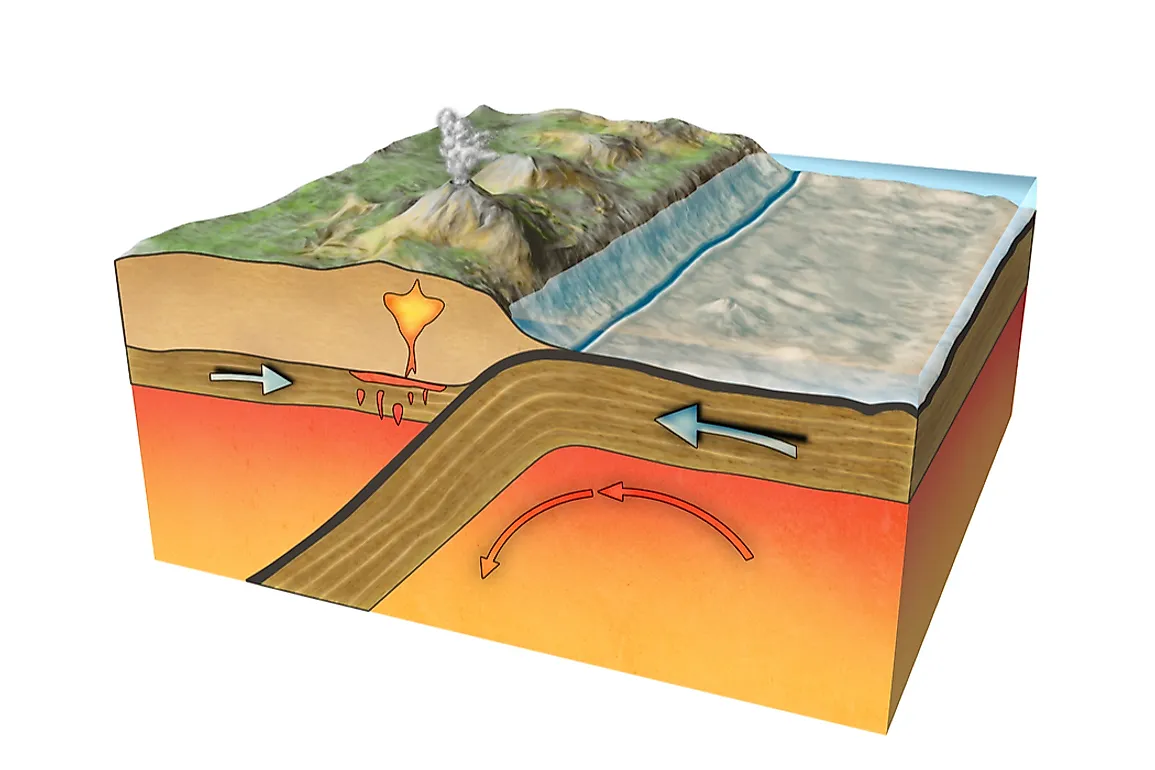How Do Tectonic Plates Move?

Introduction
A tectonic plate is a large slab of solid rock with an irregular shape that is made up of the oceanic and continental lithosphere. The size of the plate varies to a large extent, ranging from a few hundred to thousands of kilometers. Plates at the surface of the Earth move due to intense heat from the core of the planet. The heat makes the molten rock to move in convection cells pattern, consequently causing the plates to move.
Convection Cells in the Mantle
The interior part of the Earth consists of both metal and rock. In the inner core, the temperature is higher than the temperature on the surface of the Sun, setting the materials on the outer core and the molten rock in the mantle in motion. In essence, the material close to the inner core is warm due to the intense heat in that region, and as a result, it becomes lighter than the one above it and begins to rise. On the other hand, the material further away from the inner core sinks down due to its weight (since it is still cold) and replaces the warm material that has risen. As this material sinks down, the heat from the inner core makes it warm and it rises while the material above it gets cold and sinks down. The process repeats, creating a convection cell pattern in the mantle which causes tectonic plates movement.
Developing the Theory of Plate Tectonics
The mechanism of the tectonic plate movement has been the debate among the Earth scientists. They once based their argument on the convection cells that the Earth's tectonic plates surfed on them. However, they currently have the belief that the movement of the tectonic plates does not only depend on the convection cells in the mantle but also the plates' motion that corresponds to the convection cells. The theory of plate tectonics is based on the fact that there are warmer and thinner parts of tectonic plates that have high tendency to rise and colder and denser parts which have high tendency to sink.
The new parts of the plates constitute the warm and the thin sections, while the old parts constitute the cold and dense part. Through the ridge push, hot magma rises and forms crust on the surface, pushing the other portion of the plates outwards. On the other hand, the old parts sink down into the mantle at subduction zones through the slab pull process because they are denser than the material in the mantle. The theory of plate tectonics develops from the ridge push and the slab pull which together lead to the motion of the tectonic plates.
Controversy Surrounding Tectonic Plate Movement
From the convection cells in the mantle and the theory of plate tectonics, the operation of the plates movement appears to lack more details to explain it fully. Earth's scientists are still debating amongst themselves on the mechanism by which the Earth's tectonic plates move. Therefore, the process of the movement in detail is highly controversial.











